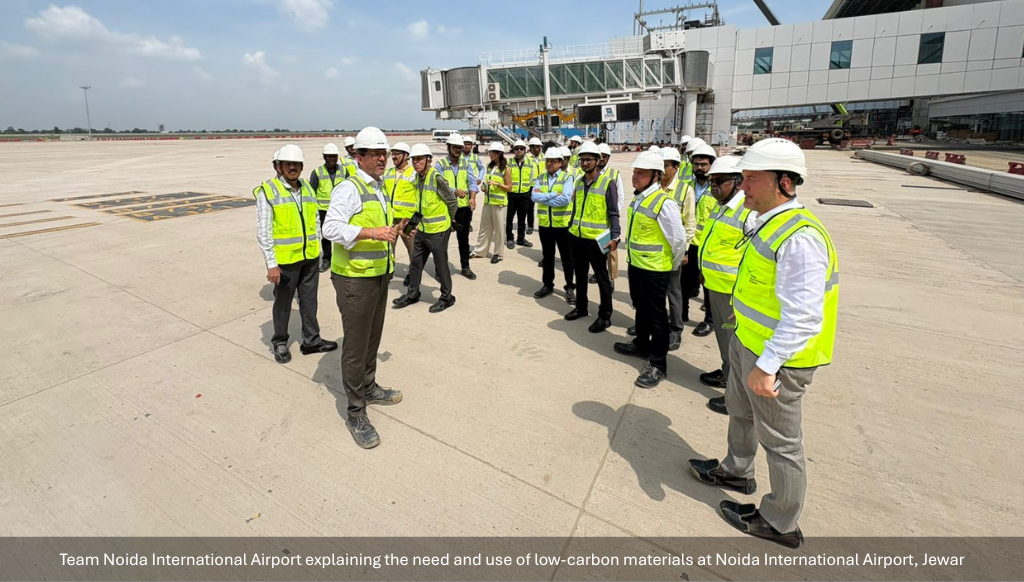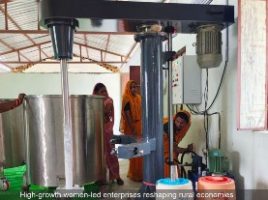Redefining Construction for a Sustainable Tomorrow

After a decade of hard work and perseverance supported by the Swiss Agency for Development and Cooperation, the wait is finally over. A couple of ground-breaking events have changed the way cement will be produced in India in the near future. On 29 July 2025, JK Cements Ltd. announced the launch of commercial production of LC3 at its Mangrol, Chittorgarh plant.
On 12 September 2025, Noida International Airport (NIA) showcased the use of LC3-based concrete in infrastructure construction at the newly built airport in Jewar, Uttar Pradesh. Both events are landmarks on their own and will change the way construction is approached in India. India is the second-largest cement producer in the world, with an annual capacity of approximately 450 million tonnes. With a projected 8% growth in the housing and infrastructure industries, cement production in India is expected to reach around 1,500 million tonnes by 2070. Due to the limited availability of slag for producing Portland Slag Cement and the reduced availability of fly ash to produce Portland Pozzolana Cement, the Indian cement industry has limited options but to rely on LC3 to meet the increasing demand.
It is predicted that LC3 will be the dominant cement type used in India and the global south in the next 50 years.
In this context, both events are of great importance. TARA has partnered with JK Cements since 2020 to conduct feasibility studies on clays. Field surveys were carried out, and clays were sourced and tested at various plants of Nimbahera, Gotan, Muddapur, and Panna. In most areas, clays were found in appreciable quantities and of suitable quality for producing LC3. Lab-scale trials demonstrated the ability to deliver high-quality cement from a basic mix of 50% clinker, 30% calcined clay, 15% limestone, and 5% gypsum. Pilot production trials in existing rotary kilns and grinding in close-circuit ball mills also yielded enviable results. TARA is proud to be associated with and support JK Cements in making informed decisions to produce LC3 and progress towards first commercial production.
However, although various cement companies, such as Ultratech Cements, JK Lakshmi Cements, Dalmia Bharat Cements, and Shree Cements, intended to produce LC3 on a commercial scale, the lack of market demand delayed production. In this regard, NIA’s initiative to champion the use of LC3 is groundbreaking.
On 12 September 2025, TARA, in partnership with the Swiss Agency for Development and Cooperation in India, the Embassy of Switzerland in India and Bhutan, and NIA, organised an industry engagement session at Noida International Airport. The event aimed to bring together stakeholders from the cement industry, government, and technology providers to showcase and inaugurate the use of LC3 in infrastructure construction at the airport. Additionally, the session focused on discussing pathways for the future use of sustainable construction materials, particularly LC3, in alignment with India’s climate commitments.
Mr Nicolus Schenk, Chief Development Officer, NIA (managed by Zurich Airport International), highlighted the airport’s commitment to sustainability and its role as a model for green infrastructure in India. Mr Philippe Sas, Head of International Cooperation, Embassy of Switzerland, emphasised Indo-Swiss collaboration on sustainable construction practices and innovation.
TARA has emphasised not only its technical parameters but also its transformative potential for the cement industry. The ability of LC3 to reduce carbon emissions by up to 40% compared to conventional cement, while also maintaining durability and strength, has also been highlighted. The abundant availability of major raw materials like limestone and clay and its affordable production costs, will make LC3 an accessible and preferred material at scale.
LC3 is not just an innovation; it is a game- changer for sustainable and affordable construction. One of the most significant aspects of the event was the on-site demonstration of LC3 cement in the construction of infrastructure at Noida International Airport. This practical application showcased how sustainable materials can be integrated into large-scale infrastructure projects without compromising performance. The initiative underscored Noida International Airport’s role as a pioneer in adopting low-carbon construction practices and provided participants with tangible evidence of LC3’s potential to transform the construction industry.
The views expressed in the article are those of the authors and not necessarily those of Development Alternatives.
This blog first appeared as an editorial in Development Alternatives Newsletter October, 2025 LC3 Cement Driving Decorbonisation in Construction.






Leave a Reply